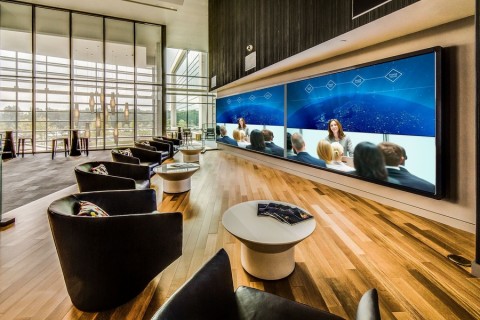While configuring AV systems, the importance of cabling and connectivity cannot be overstated. Proper infrastructure does more than just supports that sound and image quality are retained but also delivers the reliability of the overall system. In any AV arrangement, whether for a learning environment, office, or home theater, streamlining the wiring can lead to better performance and reduced technical issues. This article will outline essential strategies for improving cable management and interfacing in AV solutions.
The first step in improving media installations is to select the suitable cables for the application. Various types of cables fulfill specific purposes, so selecting reliable ones is crucial. For example, HDMI cables are widely used for delivering high-definition video and sound signals. In comparison, balanced audio cables like XLR can eliminate signal noise in sound systems. It is important to assess the span and quality of these cables, as longer cables can cause signal degradation. By investing in high-quality cables that fit the individual needs of the AV setup, users can significantly enhance total performance.

Another important strategy is organizing the wiring strategically. A well-organized wiring system not only appears neater but also improves functionality. Using cable management solutions like clips, ties, or sleeves can help maintain wires orderly and prevent tangling. This structure also makes it simpler to troubleshoot any issues that may occur. Labeling each cable according to its role or origin can reduce time during setups or maintenance. A well-labeled layout helps technicians quickly locate connections, which is especially critical in large-scale systems with numerous devices.
Additionally, assessing the layout of the environment is essential for optimizing signal flow. The location of equipment can impact how signals move through cables. Installing devices too far apart may require longer cables or signal boosters, which can be expensive and reduce quality. It is advantageous to plan the layout of equipment thoughtfully, taking into account the proximity between devices and potential obstacles such as walls or furniture. This intentional placement click can limit issues related to signal loss and enhance signal integrity throughout the AV system.
Scheduled system inspections are another important strategy for supporting reliable performance of AV cabling and signal pathways. Over time, cables may become damaged due to usage or wear and tear. Routinely inspecting all connections helps identify potential problems before they develop into major issues. Replacing worn-out cables and maintaining connectors can preserve signal quality and support the system functions smoothly. Using a schedule for periodic maintenance can help users stay on top of this aspect of their AV systems.
Finally, keeping up-to-date about emerging developments and guidelines is important for anyone working with AV setups. The sector is constantly evolving with improvements in technology that can enhance integration and efficiency. Participating in training sessions, following industry resources, or networking through professional groups can provide valuable insights into industry standards and latest tools in the industry. By leveraging these advancements and adapting them to current systems, users can upgrade their AV solutions consistently while guaranteeing they remain in line with industry progress.
In closing, enhancing infrastructure and connectivity in AV setups involves careful choice of cables, organized management, strategic space design planning, routine maintenance checks, and keeping informed on emerging technologies. By implementing these strategies, users can achieve better performance and reliability in site here their audio-visual setups, ultimately leading to a more enjoyable experience for everyone involved.